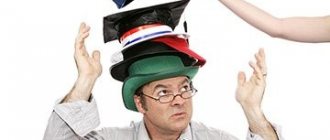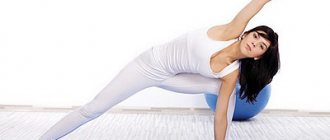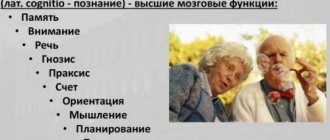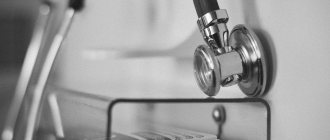How breathing exercises help
Breathing exercises for stuttering in children relax and tone the muscles involved in articulation. As a result:
- the child begins to breathe correctly, observing the pace of inhalation and exhalation;
- fear of articulation disappears;
- muscle spasm, which makes it difficult to keep up the pace of speech, goes away;
- the brain receives more oxygen, which improves its functioning;
- the muscles of the diaphragm, abdominal cavity, and nasopharynx are strengthened.
The following techniques are used in speech therapy:
- Traditional - aimed at training the abs, diaphragm, breathing control when talking, general strengthening of the body;
- breathing exercises according to A. N. Strelnikova - aimed at restoring breathing during stuttering, and also helps eliminate other speech disorders (dyslalia, alalia, general speech underdevelopment).
What are the goals and objectives of speech therapy correction?
Correct speech is one of the main signs of a successful person . Prescribed pronunciation of sounds facilitates communication.
Therefore, it is important, even in childhood, to pay close attention to the correct functioning of the speech apparatus and respiratory organs.
The correct pronunciation of speech sounds depends primarily on the mobility of the speech organs, such as:
- language;
- lips;
- lower jaw;
- soft sky.
In addition to mobility, it is necessary to maintain the correct location of the above organs in relation to each other.
Articulatory gymnastics is designed to improve the motor skills of the tongue, lips and jaw, and to acquire the skill of correct placement of organs when reproducing sounds.
Exercises to get rid of stuttering also strengthen the muscular function of the organs, making pronunciation clearer and more intelligible.
Since sound reproduction is impossible without breathing, its rhythm and intensity also determine pure pronunciation. The goal of breathing exercises is to develop a clear rhythm and balance of inhalation and exhalation in speech .
One of the main causes of logoneurosis is a failure of breathing during articulation. Therefore, both types of gymnastics, both articulatory and (especially) breathing, are widely applicable in the treatment of stuttering.
Execution Rules
Gymnastics for stuttering in children must be performed according to certain rules in order to prevent the young patient’s condition from worsening.
Below is a list of requirements:
- A preliminary consultation with a doctor is necessary, this is especially important for children who have concomitant pathologies. Before starting classes, you need to regulate the load, or identify contraindications, if any;
- The child should study with pleasure, which is possible when he is in a good mood, he is well-fed and has strength. A tired, hungry child will be capricious, and such gymnastics will do nothing but harm;
- Start with short sessions, no more than 10 minutes. Monitor your child’s reaction: if he becomes uncomfortable, it is better to postpone the lesson;
- Gradually increase the duration, but classes should last no more than 30 minutes;
- If it becomes difficult for your baby to breathe, his breathing rhythm has become disrupted, or he begins to panic, interrupt the activity;
- If desired, use music - this will help maintain the rhythm of movements;
- The inhalation is always sharp, noisy, through the nose, the exhalation is calm, effortless, through the mouth.
Articulatory
Exercises for lower jaw mobility
Exercises to strengthen the muscles of the lower jaw are the beginning of a set of articulatory exercises:
- Open and close your mouth wide, keeping your tongue motionless and calm. Performed both freely and with resistance in the form of a hand placed on the chin.
- Movement of the jaw back and forth.
- Movement of the jaw left and right.
Lip charger
The next stage is lip exercises, often the cheeks are also included in the work:
- Stretch your lips into a wide smile, holding the position for 10 seconds. Two variations of the exercise - when the teeth are visible and when they are not.
- Pull your lips forward in the form of a tube. Hold the position for 10 seconds. There are also two types of execution with tightly closed lips and with visible teeth in the resulting hole.
- The following exercise trains both the lips and the lower jaw. Having stretched your lips in a smile, open your mouth and fix the position for 5-10 seconds, then close it.
To strengthen the muscles of the tongue
The new training complex is aimed at strengthening the tongue muscles:
- Smile and open your mouth slightly and place your relaxed, flat tongue on your lower lip. The upper one bites it rhythmically, saying “five-five-five.”
- Clicking your tongue from the roof of your mouth, imitating the clatter of a horse's hooves, with your mouth slightly open.
- Using a wide tongue, lick your lips in a circle, starting from the top.
- Smile and open your mouth slightly, “clean” your upper teeth from the inside with your tongue, then from the outside, then the lower teeth. The jaw should remain motionless.
- Slightly stretching your lips and opening your mouth slightly, stroke the palate with the tip of your tongue back and forth.
Useful knowledge about articulatory gymnastics in the video:
Who should not do breathing exercises?
Breathing exercises for stuttering in children require concentration and strict adherence to technique, so it cannot be performed until 3–4 years of age.
There are other contraindications:
- discomfort or pain in any localization when performing - headaches, chest pain, joint pain. It is better to consult a doctor to find out the cause of such symptoms;
- neurological diseases - hydrocephalus, increased intracranial pressure, brain space-occupying lesions, epilepsy;
- diseases of the cardiovascular system - congenital defects, mitral valve prolapse;
- previous injuries to the spine, head, chest, arms, legs;
- urolithiasis, hydronephrosis;
- any severe chronic disease with impairment of general condition.
This is not the entire list of contraindications. You should consult with your child's healthcare provider to determine the feasibility of completing the activities.
Acute diseases - colds, inflammatory, infectious - are a temporary contraindication to sessions. After normalization of the condition and good test results, performing gymnastics is possible. The period of abstinence is determined by a specialist.
Treatment for stuttering
In modern medical practice, there are different options for eliminating stuttering; complex treatment is often used. When children who stutter are treated, professional correction is required, in which a speech therapist helps get rid of functional speech defects.
For this purpose, an individually developed program is used to correct stuttering , which involves speech therapy manipulations with the help of which speech becomes smooth. As a result, children develop the correct breathing rhythm and stuttering is eliminated.
If a child's examination reveals a nervous pathology, medication is often prescribed. In this situation, mandatory consultation with a specialist is required. Most problems can be solved without the use of medications, so it is not advisable to be overly trusting of medical specialists.
Psychological disorders are complex, and therefore require serious work on the child’s condition in the family circle; medications most often contribute to the oppression of the individual, this implies a certain danger.
According to many experts, the most effective way to eliminate defects of this kind is gymnastics. Breathing exercises are useful because they affect the lungs and diaphragm during pronunciation; this process is the basis for the reproduction of sounds. When stuttering, syllables alternate smoothly and speech becomes uneven. The amount of air during exhalation is minimal, so the phrase is intermittent.
This complex is aimed at stabilizing breathing and ensuring smoothness. Classes with patients require achieving a certain result, eliminating speech disorders.
You need to understand that therapy for such a pathology begins after visiting a doctor, who examines the patient, provides some advice, and provides speech correction. Often, a specialist conducts an initial examination and helps to achieve the effect of breathing exercises during stuttering.
Breathing exercises by Strelnikova A.N.
Gymnastics according to Strelnikova has been successfully used since the end of the 20th century. The author developed a technique and used it to restore the voice of singers and speakers. Over time, a positive effect was discovered in the treatment of stuttering and other speech disorders.
The technique is based on dynamic breathing movements through the resistance of the diaphragm muscles. During inhalation, the chest contracts (through grasping with the arms or due to bending and turning of the torso), exhalation occurs calmly, without effort.
On the first day, complete the first 3 exercises, repeating them 8 times. Each subsequent day, add one more exercise to the main complex.
Exercise "Palms"
The task serves as a warm-up. The patient must take a sharp breath through his nose 4 times, then pause for 4 seconds and again a series of breaths. Hands in front of you, on the sides of the body, clench your palms into a fist for each breath. Shoulders relaxed. It is performed while standing, but if you feel dizzy or find it difficult to stand for other reasons, you can sit down or even lie down.
After inhaling, you need to exhale. Repeat 32 times.
Exercise "Hug your shoulders"
The back is straight, sitting or standing position. Hands need to be raised to shoulder level, bent at the elbow joints, palms down, one forearm on the other (as if the baby was sitting at a desk). Take a short and noisy breath and hug your shoulders with force, squeezing your chest. There should be a triangle in front of your face. As you exhale, loosen your grip and spread your arms.
Do 8 times. Then pause, and repeat. There should be 12 such repetitions.
Exercise "Epaulettes"
The child stands, arms extended in front of him, elbows bent, pressed to the stomach, palms clenched. Takes a sharp breath, at this time sharply pushes his fists and pulls his shoulders down, straightens his palms, which allows the air to pass deeper and in greater quantities than usual. Then you need to exhale.
Inhalation and exhalation alternate, thus performing 8 series. After this, a few seconds of respite and a new approach. In total you need to complete 4 approaches.
Exercise "Pump"
It is also performed standing, legs apart, arms along the body. As you inhale, the child should bend forward, rounding his back and imagining a pump. Hands reach knees, head is bowed forward. The entrance is over - you need to exhale and return to the starting position. A total of 8 approaches are required.
There are other exercises for stuttering: “Large Pendulum”, “Head Turns”, “Ears”, “Small Pendulum”, “Rolls”, “Steps”, “Cat”. You will master them later, when you have developed the correct algorithm for performing the previous exercises.
Why are breathing movements necessary?
As a result of performing the exercises, breathing during stuttering becomes abdominal or diaphragmatic. Before this, it is thoracic superficial and has a convulsive nature due to insufficient development of the abdominal muscles. This is especially pronounced in those patients who do not accept sports in any form and whose disease was diagnosed a long time ago.
With this type of breathing, the excitability of the respiratory and speech centers of the brain increases, which negatively affects the rate of speech: the child speaks quickly and begins to stammer.
Training the abdominal muscles, the muscles of the diaphragm and the formation of a stereotype of deep abdominal breathing can eliminate these disorders. The vital capacity of the lungs also increases, which is why the baby begins to use breathing more effectively when speaking: the voice does not interrupt, it becomes even and expressive.
In addition, gymnastics is movement. And with movements, brain activity increases, interneuron connections between the left and right hemispheres are restored. The child’s cognitive processes improve and he begins to assimilate new information more easily. This is especially noticeable if you supplement the tasks with regular physical exercises.
How to increase the effectiveness of gymnastics
The results of breathing exercises for stuttering will be better if you follow the following rules:
- Comfortable conditions for classes are required. To do this, you need to first ventilate the room, avoiding cold or, conversely, too warm temperature in the room;
- If a child is studying with a specialist, an emotional contact must be established between them, otherwise it will be stressful for the patient and he will refuse to study;
- It is advisable that the first few lessons be conducted by a speech therapist and show how to perform the movements correctly. Improper technique can make stuttering worse;
- Gymnastics does not cancel other types of correction - classes with a speech therapist, psychologist, drug treatment, physiotherapeutic procedures, massage, physical therapy, but only complements them. Follow your doctor's recommendations and do not skip medications or other treatments;
- Classes should be held regularly, at least 2 times a day.
- For lessons, choose morning or afternoon hours - at this time children are cheerful, full of strength and energy;
- During a course of gymnastics for stuttering in children, you need to provide the child with adequate sleep and rest, and avoid physical and emotional stress;
- Combine speech therapy with regular sports activities. Any form of activity at home is suitable: jumping, push-ups, squats, training on exercise machines (if you have them);
- Get outdoors more often. Regular walks, outdoor games, running, cycling not only train the respiratory muscles, but also create a good mood, saturate the body with oxygen, and strengthen the body;
- Develop correct eating behavior: the diet should contain a lot of fresh vegetables and fruits, food should be in moderation;
Remember that one of the important factors that influences the outcome of stuttering treatment is the kindness and acceptance of parents. Children subtly sense the atmosphere in the house and the attitude towards themselves. Do not scold or shame your child under any circumstances, especially in front of strangers.
Rejoice at his successes, praise him, show in any way that you are there for him and love him, regardless of whether he has a stutter or not. This is an additional incentive for him: he will try harder, make an effort, and the result will not keep you waiting.
What types of logoneurosis can be corrected?
Stuttering is a consequence of spasms of both the speech apparatus and the respiratory muscles. There are several classifications of types of speech problems.
Depending on the type of seizure, the following is determined:
- tonic logoneurosis with prolonged convulsions of the speech and respiratory organs;
- clonic stuttering with temporary but frequent disruptions in muscle function;
- mixed, combining both types of spasms mentioned and most often encountered in the practice of a speech therapist.
The main types of logoneurosis according to the place of occurrence of spasms:
- vocal, in which the larynx, vocal folds or neck muscles spasm.
- respiratory is characterized by spasm of the vocal apparatus during inhalation or exhalation;
- articulatory - during the onset of convulsions, they cover the mouth and jaw as a whole, the tongue or the soft palate.
In addition, experts distinguish types of stuttering based on their occurrence.
Logoneurosis often becomes the result of severe stress, fear or another strong emotional outburst. This is the so-called neurotic stuttering.
Articulation and breathing exercises are effective for any of the listed types of logoneurosis, since they contribute to:
- strengthening muscles;
- regulation of respiratory rhythm;
- relaxation of the speech organs, which leads to the relief of spasm.
In some cases, stuttering is caused by injuries or problems with the brain. Another reason is the hereditary factor. These situations refer to a neurosis-like disease.
With this type, it is necessary to resort to additional drug intervention . Nevertheless, gymnastics is prescribed as a concomitant therapy.
Recently, defectologists have been inclined to think that this division is archaic. Sometimes the actual cause of a speech therapy problem is very difficult to determine. In a number of situations, the anamnesis combines several factors that provoked the disease.
At what age can it be used?
It is advisable to start using the methods at the first signs of the disease . Such therapy will be more effective, and getting rid of the problem will come faster. However, classes should be carried out at any stage of the disease.
According to observations, it is easiest to cure logoneurosis in children aged 2-4 years. In adolescents, the task is somewhat more difficult, since the course of the disease is aggravated by the psycho-emotional characteristics of the puberty period.
Paradoxically, adult patients find it more difficult to adapt to the rhythm of exercise and get tired faster during the training process.
Gymnastics are prescribed regardless of the patient's age . The effectiveness of their use depends on the systematicity and frequency of implementation.
Contraindications for stuttering adults and children of preschool and school age
There is no absolute medical ban on performing gymnastics; all factors that impede performance are temporary. Articulation exercises are prohibited for any infectious or inflammatory diseases of the oral cavity. In case of ARVI, acute respiratory infections, stomatitis, herpes, it is recommended to postpone classes.
The situation is similar with breathing exercises. In addition, it must be carried out subject to the following conditions:
- in a well-ventilated area;
- not on an empty stomach and not immediately after eating. The optimal time period is two hours after eating;
- Eating after exercise is permissible an hour later, so that the muscles of the abdominal cavity and diaphragm calm down and rest;
- During training, the patient’s condition should be monitored, since frequent deep breaths can cause dizziness.
Otherwise, gymnastics has no negative consequences for the patient . It goes without saying that his physical condition should allow him to perform the exercises prescribed by the speech therapist.












